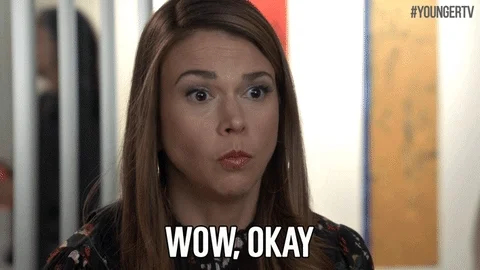Originally published at: Last Week Tonight highlights Shaquille O'Neal's impeccable logic on gas pricing | Boing Boing
…
Great logic. I’d bet a buck two eighty that he’s right about that.
How did he win so many basketball games when he is so consistently wrong about basic math?
“I got 20 points in the first half, then I got another 20 points in the second half. That’s how you score 80 points a game.”
He seems clear on spending $20 from half doesn’t get you to full, it gets a “buffer zone”. So he isn’t falling down quite where everyone else tries to correct him.
However, it is clear that he isn’t figuring that he will need to spend $20 four times as frequently as spending $80…
…unless secretly he is in fact an economic genius. If you assume gas prices are going to head down “soon” you clearly don’t want to stock up on expensive gas, you want to keep as little of that stuff around as you can, and only start filling the tank once princes drop.
(do I really think that is true? No, if it was, he would explain it, but it amuses me to think so…much like the SNL Ronny Raygun genius skit amused me)
They don’t call him “The Big Aristotle” for nothing
Shaq and I have degrees from the same university (LSU), but we seem to have very different math education
True, but between the two of you, you have 4 NBA championships!
Um…Shaq has an MBA from the University of Phoenix. Yes, that University of Phoenix.


What he’s describing is an effective way to buffer oneself from rapidly fluctuating prices. It’s the same idea as contributing $100 to a retirement investment each paycheck rather than, say, $2600 at the end of the year; rather than trying to time the market for your investment, it is evened out over time.
It doesn’t address the fact that a non-fuel efficient vehicle will always cost more in fuel than a fuel efficient vehicle, regardless the current price of gas.
Like. . . I can’t figure out what they’re debating here.
The price of gas is the same either way. The size of the tank doesn’t change. You’re just stopping more often at the gas station. In fact, if the price of gas goes up since the last time, you’re paying even more than you could have been.
It’s like some kind of diet advice “lose weight by only taking little bites” when you still eat the entire meal.
No, you did figure it out. One guy thinks this works and nobody else seems too.
There is a debate because the guy who has it wrong is famous and good at something. That something isn’t optimizing gas prices though.
I personally have fancy theories about how it could work out, but I know they are not why famous guy thinks his method works.
Well, ok, it is in theory possible that his gas gage is calibrated so the “top half” of the readout indicates far less than half the tanks capacity. So the money it takes to fill ¼ of the tank actually moves noticeably more than ¼ of the way from ½ to full. I have had cars like that. However most people with cars like that tend to figure out the gas gage is a lie not that they can magically get more gas for the dollar if they fill at ½!
Wholly f@ck, how did this guy even get this far in life. And thanks for the pointers rich dude…
I can only hope it’s some kind of macho old school t rolling.
I have too!
I was once proud of myself for figuring out that the guage went down quicker and quicker because the steady rate that the car is depleting is taking a larger and larger percentage of what’s left.
Never did bother to find out if i was right about that.
That’s going into my next song, bless you.
Hypothetically, the second half of the tank should take more time/mileage to consume because the vehicle doesn’t have to lug around the mass of the first half. Practically speaking, that really only matters for go-karts.
Also aircraft and rockets. Basically, any vehicle where more than x% of the weight is fuel. Definitely not SUVs.
Here’s a simple way I was taught to shop for the cheapest gas. It uses a rudimentary statistical sampling system, but requiring virtually no math skills. It’s based on the assumption that you will encounter many suitable gas stations along your entire route (i.e. it might not be a good idea if you’re driving cross country through sparsely populated areas.)
- Begin looking when you have 50 miles worth of gas left in the tank.
- During the first 5 miles, take note of the lowest gas price you encounter, but don’t buy it yet.
- As you drive the next 35 miles, fill up at the first station that has a lower price than the one you noted.
- If you don’t see a cheaper price by the time you have only 10 miles remaining in the tank, fill up at the next station you see.
( Be aware this is really risky advice. Most gas tanks have crap swirling around the bottom of the tank, and maybe some water sloshing around as well. As you get close to the very bottom, you risk sucking up the watered down, gunked-up gas, which can plug up your fuel injection system, requiring repairs more expensive than any fuel savings you might have realized. )
Maybe Shaq was trying to recommend a system like this, $20 at a time, but got confused before getting to the end of his sentence?
Even if that is what he’s trying to communicate (and if he is then he’s doing it very badly) it’s still a zero-sum game in the long run.
If you have no way of knowing whether the gas prices are going to go up or down from one day to the next then you might as well just fill up your gas tank every time, because the next time you get a chance to fuel up it could cost you more instead of less.
